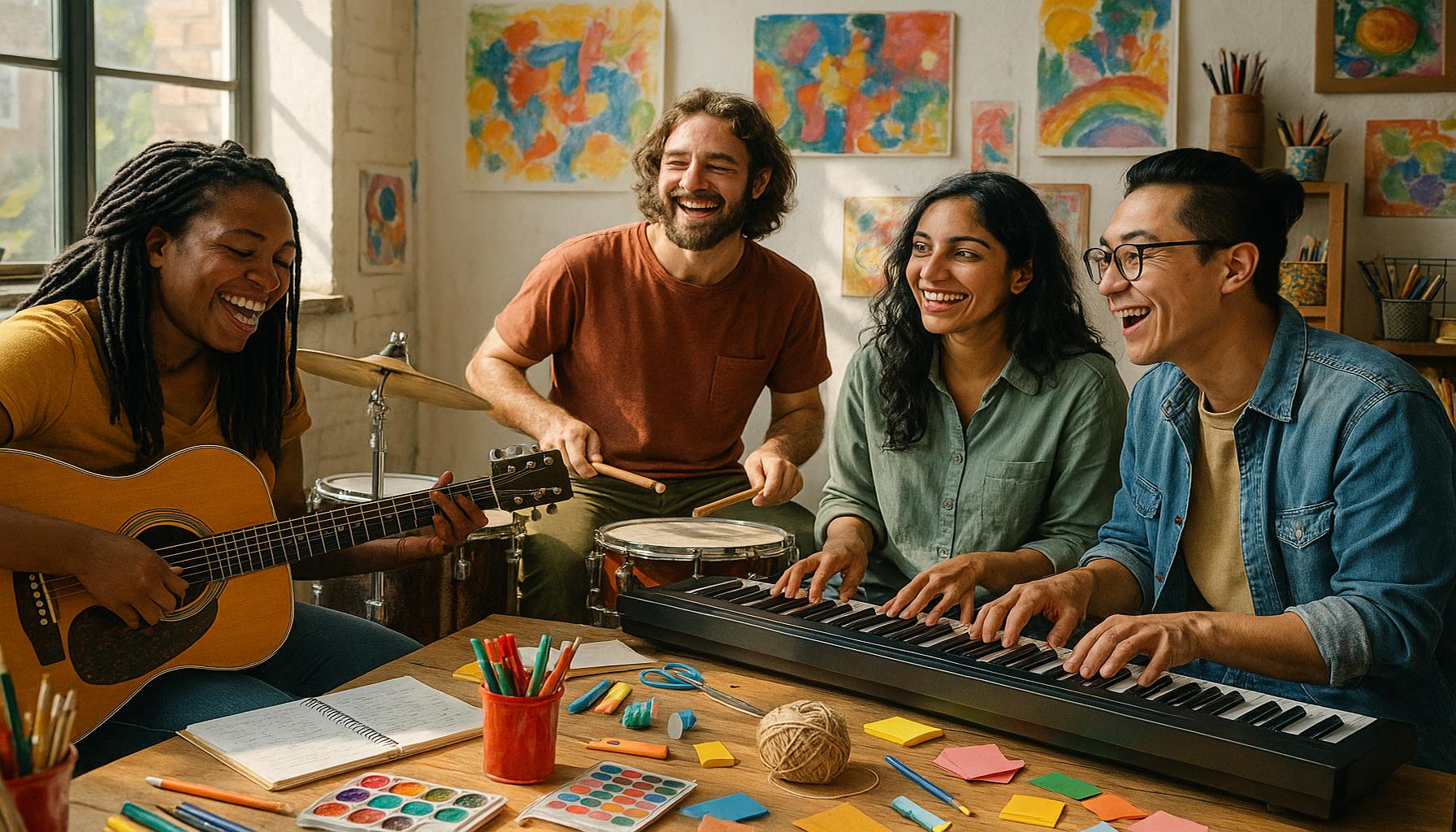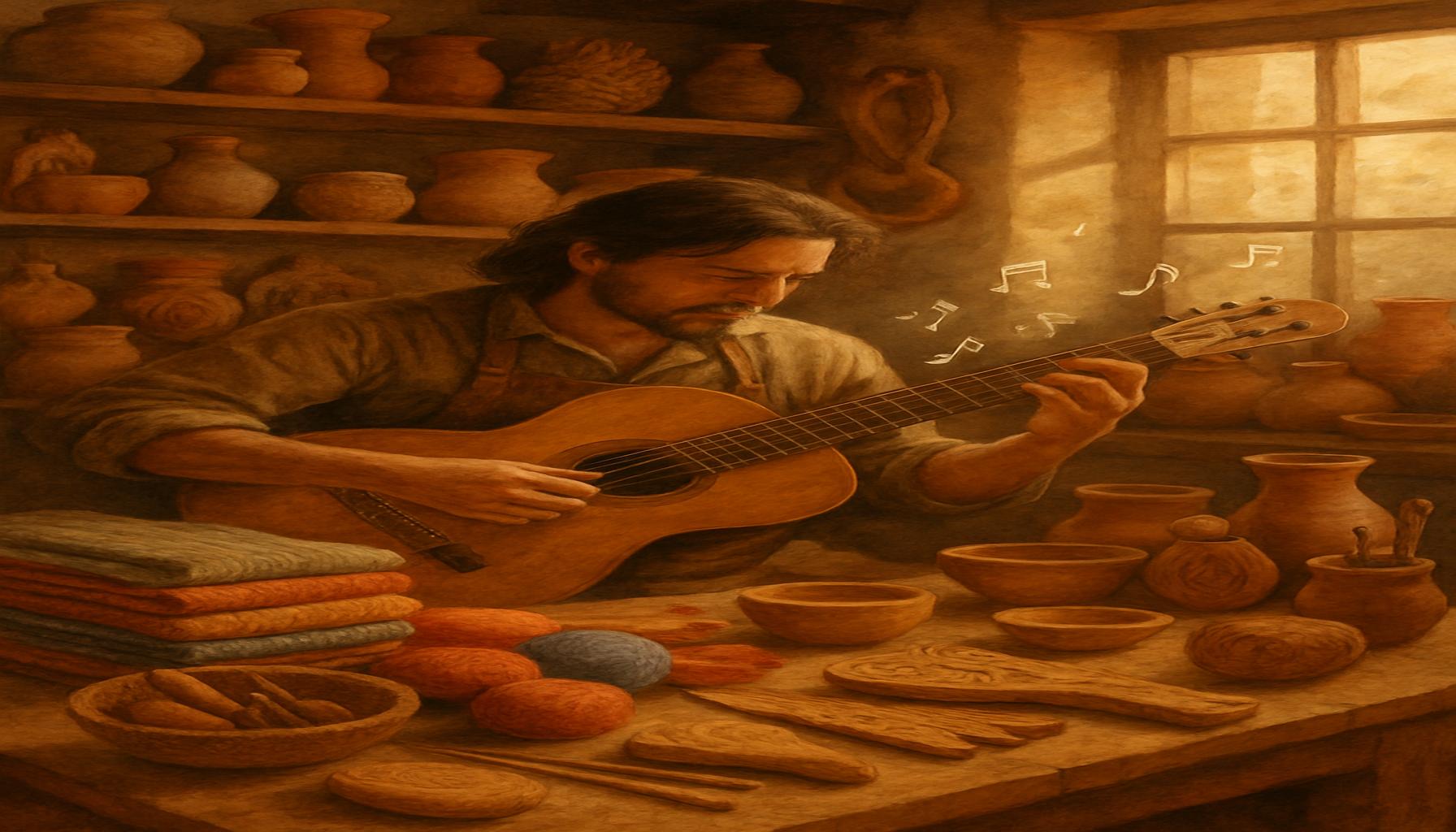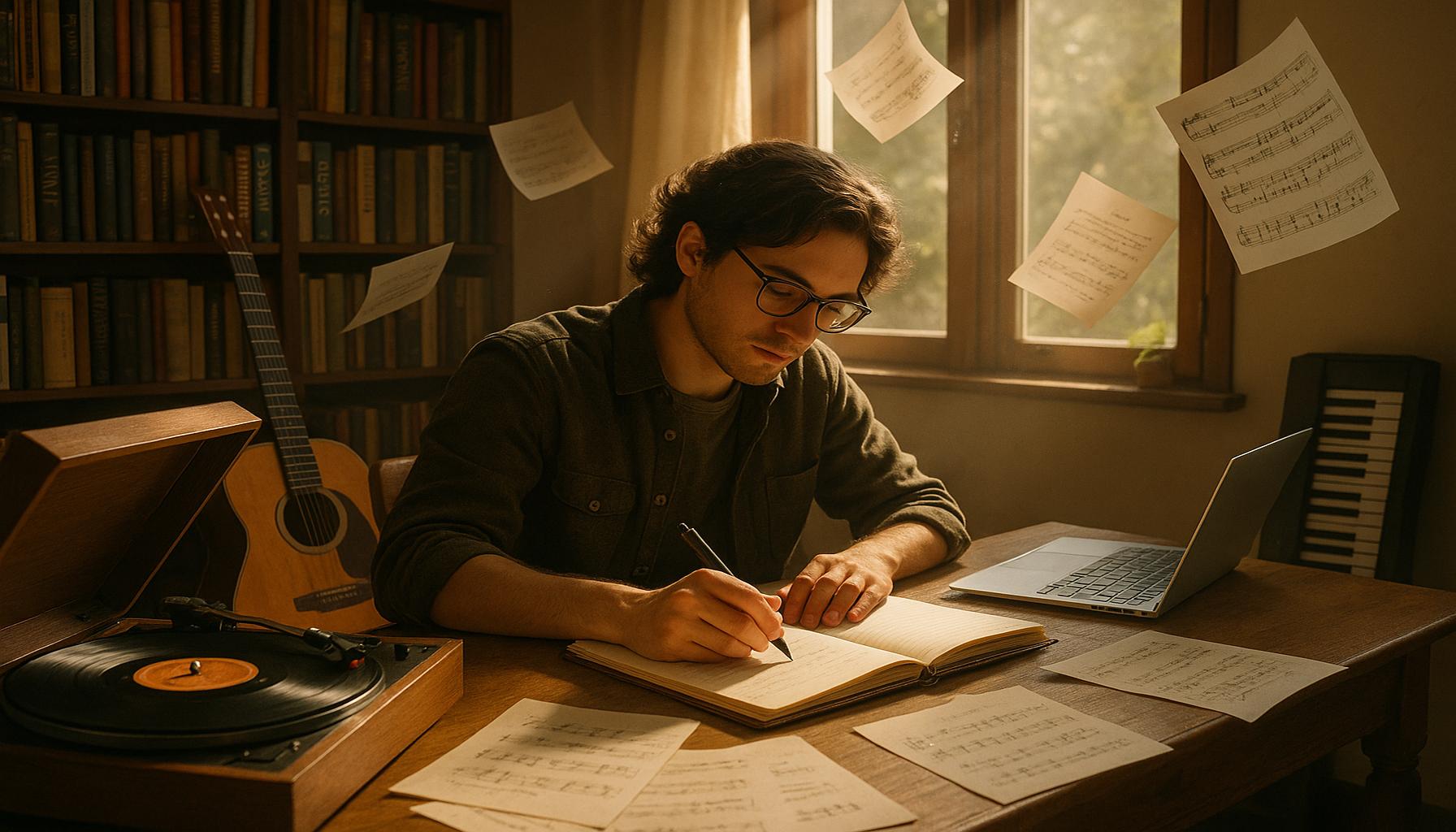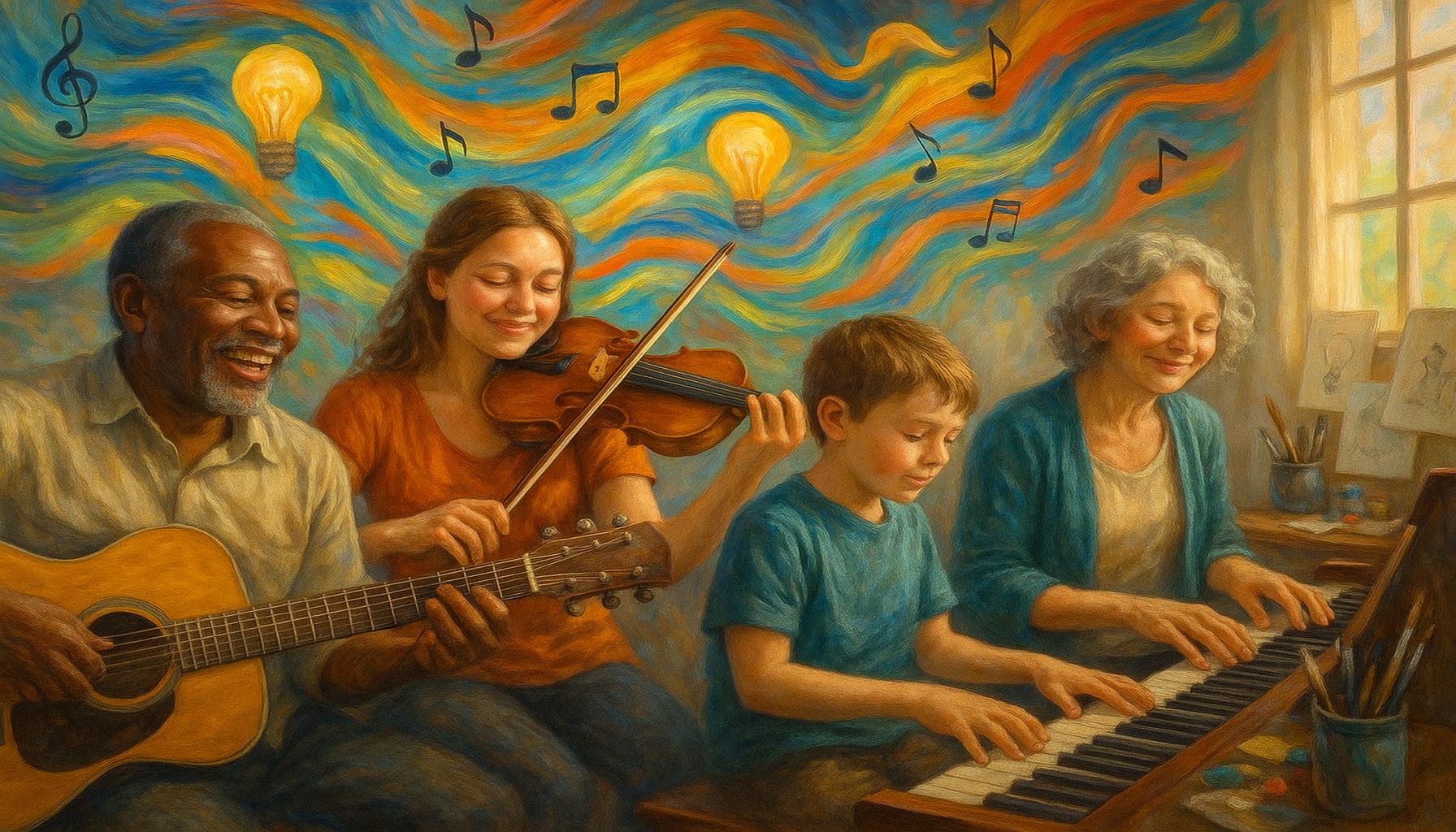How Music Improvisation Can Enhance Problem-Solving Skills in Creative Hobbies

Unlocking Creativity Through Music Improvisation
Have you ever thought about how music can shape our thinking? In an era where problem-solving is essential, music improvisation offers a unique way to enhance our creative abilities. The spontaneous nature of improvisation allows musicians to explore new ideas and experiment without the fear of judgment, forging pathways to innovative thinking.
Engaging in music improvisation can lead to significant improvements in various stakeholders. Here are a few noteworthy benefits:
- Boosts Flexibility: Musicians who improvise learn to adapt their ideas quickly, a skill that translates directly into creative hobbies. For example, a jazz musician may take a standard tune and alter it dramatically by mixing genres or changing the tempo. This ability to pivot and adapt can be applied in everyday scenarios, from brainstorming sessions at work to artistic endeavors like painting or writing.
- Enhances Collaboration: Playing with others fosters teamwork and communication, key elements in effective problem-solving. When musicians get together for an impromptu jam, they must listen intently, respond to each other, and build on one another’s ideas. This dynamic mirrors collaborative environments in the workplace, where successful projects often spring from brainstorming and team synergy.
- Encourages Risk-Taking: Improvisation teaches individuals to embrace failure as part of the learning process, nurturing a growth mindset. A seasoned improviser understands that not every note will land perfectly; the real magic lies in the willingness to experiment. This can encourage professionals in any field to take calculated risks, fostering an environment where innovation can thrive.
Furthermore, studies suggest that skills gained through musical activities often transcend music itself. Research indicates that children exposed to musical improvisation show enhanced problem-solving skills and improved academic performance. By integrating improvisation into creative practices, individuals may find themselves more equipped to tackle complex challenges in various domains, such as technology, art, and business.
Notably, renowned companies have increasingly recognized the value of creativity in their hiring practices. For example, some tech giants like Google have implemented creative workshops to simulate improvisational scenarios, believing that such experiences can lead to innovative solutions in technology development and product design.
In this article, we will explore how music improvisation serves as a powerful tool for enhancing problem-solving skills across different creative hobbies. Join us as we delve into the intriguing connection between sound and innovation, illustrating how harnessing the principles of music can open the door to a world of creativity and collaboration.
DISCOVER: Click here to delve into the power of music and creativity
The Mechanics of Improvisation: How It Shapes Our Mindset
At its core, music improvisation transforms how individuals approach challenges and think critically. The inherent unpredictability of improvisation demands a mindset that is not only adaptable but also open to exploration. This flexible approach can be particularly advantageous in creative hobbies, where problem-solving often involves navigating uncharted territories. By engaging with improvisation, hobbyists learn to reframe challenges as opportunities for innovation and growth.
The practice of improvisation inherently builds several key cognitive skills that are crucial in problem-solving scenarios:
- Creative Thinking: Improvisation fosters an environment where spontaneous ideas can flourish. For example, a potter might decide to let the clay guide their hands rather than adhere strictly to a template, leading to unexpected forms and designs. This principle of letting go of preconceived notions can be applied to any artistic endeavor, whether it’s painting, writing, or digital design, encouraging creators to think outside their usual frameworks.
- Critical Listening: Musicians who engage in improvisation must attune their ears to their fellow performers and their own instincts. They learn not just to hear, but to understand musical conversations happening around them. This skill translates into other realms, like collaborative projects where active listening is vital for understanding diverse viewpoints, thus paving the way for effective solutions.
- Emotional Intelligence: The freedom of improvisation allows artists to channel their emotions into their creative work. This practice enhances emotional awareness, enabling individuals to navigate their feelings and those of others. In creative hobbies, this emotional depth can lead to richer expressions and connections within a community, further enhancing collaborative problem-solving.
Furthermore, research has shown that music improvisation can significantly impact how individuals handle stress and anxiety, particularly in high-pressure situations. When musicians create spontaneously, they often experience a state of flow—an optimal experience that transcends typical challenges. This concept is vital for anyone involved in creative hobbies, where the pressure to produce can sometimes stifle creativity. By embracing improvisational practices, these individuals can learn to manage stress, approach tasks with a clear mind, and embrace failure as part of the learning journey.
As we delve deeper, it’s essential to focus on the specific strategies that musicians use in improvisational settings. These techniques can provide invaluable lessons for anyone looking to enhance their problem-solving skills in creative hobbies. Understanding the mechanics behind these practices not only enriches the individual experience but also builds a community where creativity is celebrated, and collaboration thrives.
Exploring the Connection Between Music Improvisation and Problem-Solving
Music improvisation is not merely a form of expression; it serves as a rich ground for developing critical problem-solving skills that transcend into various creative hobbies. At its core, improvisation requires learners to think on their feet, making quick decisions and adjustments in response to ever-changing musical dynamics. This adaptability is crucial in activities such as painting, writing, and even cooking, where creative choices are constantly made.
The Role of Experimentation
One of the most compelling aspects of music improvisation is the freedom to experiment. Musicians are encouraged to explore various scales, tempos, and harmonies, thus fostering a sense of curiosity and openness. This approach encourages individuals to embrace trial and error, a vital component in problem-solving. When faced with challenges in creative hobbies, individuals who practice improvisation are more likely to devise innovative solutions rather than rely on established methods.
Enhanced Collaboration
Improv sessions often involve collaboration with other musicians, promoting teamwork and communication. These skills are equally important in group creative endeavors, such as theatre productions or collaborative art projects. Working together in a musical setting cultivates an understanding of diverse perspectives and flexible thinking, which are pivotal for finding effective solutions to complex problems.
Real-Time Feedback and Adaptation
In musical improvisation, performers receive real-time feedback—both from the music and their audience. This instant response fosters a mindset focused on adaptability and resilience. For instance, if a musician plays a note that doesn’t fit, they must quickly find a way to harmonize or transition, a skill that proves beneficial when navigating obstacles in other creative fields. By engaging in music improvisation, individuals enrich their problem-solving toolkit. With these enhanced skills, hobbyists can approach challenges with newfound confidence and creativity, unlocking their potential across various artistic domains.
DIVE DEEPER: Click here to learn more
Translating Improvisational Skills Beyond Music: Practical Applications
One fascinating aspect of music improvisation is its ability to transcend the confines of the musical realm and influence various creative hobbies in profound ways. Understanding how musicians apply specific improvisational techniques can unlock a treasure trove of skills that hobbyists can leverage in their endeavors.
For instance, spontaneity is a fundamental aspect of improvisation. Musicians often thrive in the moment, responding immediately to the themes and cues presented by fellow players. This spontaneous mindset can be transformed into a practice for visual artists. When a painter permits themselves to experiment with colors or brush strokes without the fear of making mistakes, it can lead to innovative results that might not have emerged from a rigid plan. Embracing this spontaneity cultivates a culture of experimentation, encouraging artists to take risks that can yield surprisingly powerful outcomes.
Another invaluable technique employed in improvisation is the concept of building on ideas. In the collaborative environment of a jam session, each musician contributes to a collective narrative. They listen and react to one another, weaving individual contributions into an enriching whole. This process mirrors the practice in creative writing workshops, where one writer’s idea can spark a new story thread for another. Implementing a strategy where hobbyists feel comfortable sharing rough ideas can ignite creativity and lead to unexpected solutions in their projects.
Moreover, improvisation promotes adaptability. When unexpected events occur, musicians must pivot their plans and adapt their performances accordingly. This flexibility is equally pivotal in fields like photography or craft-making. For example, a photographer who encounters uncooperative lighting can adjust their perspective or experiment with different settings rather than abandon the project. Adapting to unforeseen challenges in this way often leads to innovative techniques and enhanced creative results.
Additionally, the principles of collaboration inherent in music improvisation carry significant weight across various hobbies. The supportive interactions fostered in a musical setting can pave the way for stronger partnerships in collaborative projects, whether it’s co-authoring a novel or constructing a community mural. The trust built through improvisational music-making allows participants to feel secure in sharing their thoughts, ultimately leading to more comprehensive and inventive solutions to common challenges.
The deep connection artists form through improvisational practices is enhanced by feedback loops. Musicians constantly engage in dialogue with one another, which mirrors the process of receiving constructive criticism or encouragement in creative workshops. This continuous feedback loop not only refines individual skills but can vastly improve overall project outcomes. For example, a sculptor can refine their technique by discussing their work with others, leading to more inventive approaches and methodologies.
As hobbyists immerse themselves in these improvisational techniques, they begin to create a mindset filled with curiosity, open-mindedness, and a resourceful attitude toward problem-solving. These qualities are essential for fostering a thriving creative community that eagerly embraces innovation and collaboration. The journey of applying improvisational skills to hobbies is not only about enhancing creativity but also about building a supportive network where experimentation is encouraged, and collaborative triumph is celebrated.
DISCOVER MORE: Click here to start your sustainable gardening journey
Conclusion: Embracing Improvisation for Enhanced Creativity
In conclusion, the intersection of music improvisation and creative hobbies offers a rich landscape for enhancing problem-solving skills. The techniques derived from musical spontaneity, idea-building, adaptability, and collaboration can empower hobbyists to cultivate a more dynamic approach to their respective crafts. By embracing spontaneity, artists, writers, and creators can forge new paths of innovation that challenge conventional norms, ultimately leading to creativity that is not just performed, but experienced.
The art of improvisation teaches us that flexibility in thinking can transform obstacles into opportunities, whether in visual arts, writing, or any other creative pursuit. The collaborative spirit that thrives within a musical ensemble can extend to cooperative projects, fostering an environment where ideas flow freely and trust is paramount. This environment encourages participants to express themselves without fear, ultimately enhancing their ability to find novel solutions to shared challenges.
Moreover, continuous feedback loops in improvisational settings not only refine individual skills but also enrich the collective output. As hobbyists apply these principles, they actively contribute to an ecosystem of creativity that values experimentation and resilience. The potential benefits of integrating improvisational techniques into creative hobbies are vast; they cultivate a mindset characterized by curiosity and open-mindedness, essential traits for navigating the complexities of any creative endeavor.
For those eager to explore this fascinating synergy, the call to action is clear: step outside the boundaries of convention, seek collaboration, and embrace the unexpected. With each note played and each idea shared, the world of creativity expands, revealing fresh Horizons of possibility that await to be discovered.


